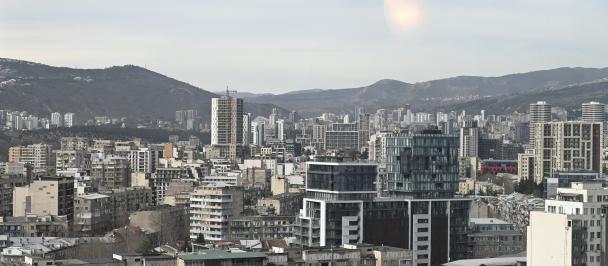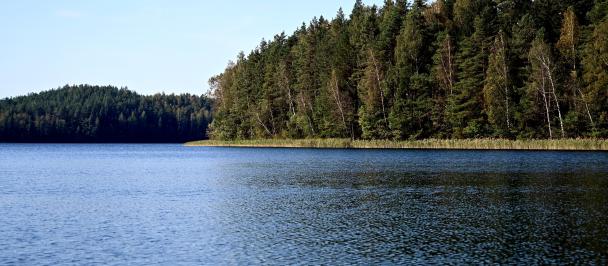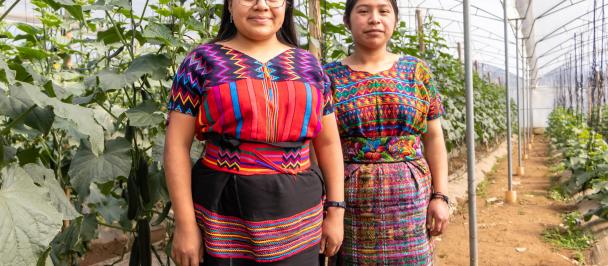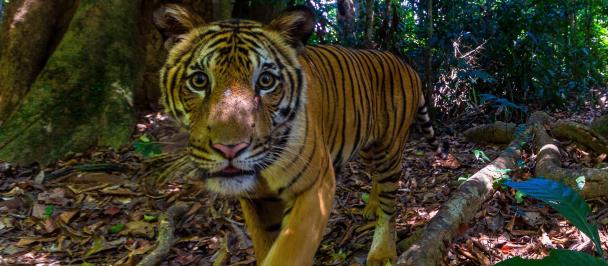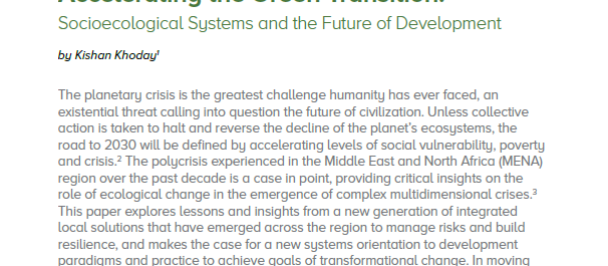Nature has a solution to the global water crisis: Trees
The answer is in nature
March 22, 2018
The answer is in nature
Our planet has an artfully designed solution to the global water crisis: Trees

What do people and trees have in common?
They’re complex life systems, engineered by nature. Both are highly dependent on water to survive, and each is ultimately reliant on the other for secure access to life-sustaining H2O.
Nature’s technology
Our blue planet is running out of freshwater, the life force that sustains us all. While 70 percent of the Earth is covered in water, only 3 percent of that is freshwater. And humans are consuming water at a rate faster than nature’s ability to replenish it.
Our planet already has specially designed ecosystems to heal itself. The answer to our water challenges lies in nature’s technology, especially in its forests and trees.
To highlight this, UNDP reached out to Earth imaging company Planet for visuals that reveal the scale of the peril and highlight nature-based solutions to this global challenge.


Making it rain
Decades of poor management, pollution and overconsumption have thrown our water systems out of balance. And climate change is exacerbating the problem. At the current rate of water use, by 2050, more than half of the world’s population will be at risk of water shortages, according to Make Every Drop Count , a 2018 report from the United Nations and the World Bank on the global water crisis.
Forests are our strongest allies in securing the freshwater resources life depends on. It is common knowledge that tree roots suck water from the soil to survive. But what is less known is the “rainmaker” role that trees play.
Forty percent of our planet’s annual rainfall come from evapotranspiration, which happens when trees “exhale” moisture through their leaves. The mist this creates can be seen by satellites all the way in outer space.

Earth’s rainforests regulate global rainfall. When one loses too many trees, the effects can be felt half a world away in the weather. The world loses the equivalent of 1,000 football fields of forests every hour, and that since the 1990s, according to the World Bank .
Forests’ rainmaking ability holds the key to our planet’s water supply and rainfall patterns. Protecting our freshwater supply starts with defending our trees.
Restoring the balance
UNDP and UN partners work with countries to preserve the world’s largest rainforests, including the Amazon, the Congo Rainforest, and the forests of Papua New Guinea. Working with governments and businesses, we are looking at water governance (from administration and management to policies and laws) as a solution to restore the balance. UN-REDD is one example of this effort.
Since 2008, UNDP has been a part of UN-REDD, a partnership with the UN Food and Agriculture Organization and UN Environment. Together, we support governments as they create national policies and actions to protect forests, tackle illegal logging and plant more trees.

Ascencio Patiachi is one of the oldest park rangers in the Amarakaeri Communal Reserve, deep in the Peruvian part of the Amazon, the largest rainforest on Earth. A few years ago, Patiachi headed into the Amazon to find ‘Harakmbut Face’, a sacred place to his indigenous people. Instead, he found a huge desert created by mining and logging in the heart of the reserve.
What Ascencio saw is no isolated incident. Planet satellites have captured before and after images of mining sites in the Amazon that throw the scale of the devastation into stark relief.




The Amazon is losing its ability to regulate rainfall because it’s losing too many trees. If current deforestation rates continue in the Amazon basin, global weather will be affected. The Americas, including Mexico, Texas and the Gulf of Mexico would be the hardest hit by more frequent severe weather conditions such as storms and heat waves.
Through the Amazon Indigenous REDD+ initiative, Ascencio and other rangers like him are working to save the forest that sustains life in their community and regulates weather across the globe.
Human tech
To understand what is happening in ecosystems, governments and environmentalists often begin by creating a map of risks. This isn’t always easy from the ground.
In the case of the Maldives, with 188 inhabited islands spread over a vast area, it can be very costly and take a lot of time. To realistically map 11 islands, it would normally take almost a year. Facing imminent danger from rising sea levels, the Maldives doesn’t have time to waste.
To speed things up, UNDP partnered with DJI, a leading drone company from China. DJI’s drones offered a bird’s eye view and helped scientists and conservationists map an entire island in a single day.


With improved maps, communities in the Maldives are working to restore their mangrove forests, nature’s solution for reducing coastal erosion and storm surges. In return, the healthy mangrove forests will help create rainfall and even remove salt from seawater in a process called desalination.
Wetlands such as mangroves, peatland, marshes, swamps and fens are Earth’s filtration systems. This natural technology acts as a sponge, absorbing pollutants in freshwater.
In 2012, the EU and UNDP began the 'Clima East' project to find community-based solutions that work with nature to mitigate climate change, restore ecosystems and develop sustainable livelihoods. Seven eastern European countries have joined the partnership, focusing on ecosystems like wetlands and forests.
Nature provides
Human innovations, like the satellite images displayed here and the drones used to create 3D maps in the Maldives, are critical to addressing big environmental challenges. But the key to planetary health is in nature’s own technology. Nature provides the forests that are our best allies when it comes to safeguarding our freshwater supply. It’s up to us to preserve them.
So, what do people and trees have in common? A shared destiny.
Both are sophisticated life forms, engineered by nature and dependent on water. Our freshwater resources are under threat, but the solutions are in our forests and all around us. By relying on nature’s intelligence, we can halt the decline in our water resources and avert a major crisis in years to come.

 Locations
Locations
